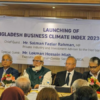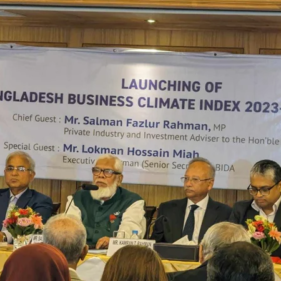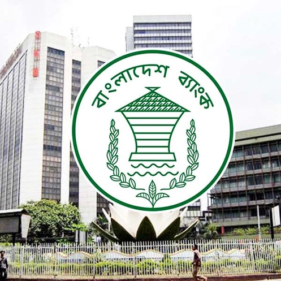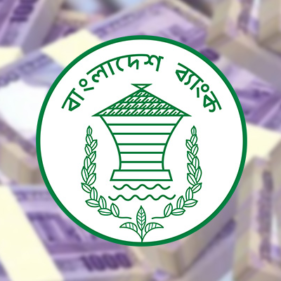Bangladesh’s share within the world readymade garment commerce greater than tripled previously 17 years because the nation cements its place as one of many largest suppliers internationally.
In 2005, the nation’s share was 2.5 p.c nevertheless it rocketed to 7.9 p.c final 12 months, information from the World Commerce Statistical Evaluate 2023 confirmed.
In 2000, Bangladesh shipped garment objects priced at $4.82 billion. It posted a meteoric rise previously 22 years, elevating earnings to $45 billion final 12 months.
Quite a few elements have pushed the growth previously twenty years because the nation solidified its place because the second-largest attire provider on this planet after China and raised its market share.
One of many strengths has been the increasing major textile sector, which has already invested greater than $23 billion.
Consequently, the knitwear section presently can avail greater than 90 p.c of materials and yarn from home markets, which has reduced the lead time by 4 weeks.
Equally, woven exporters can procure greater than 40 p.c of materials regionally. Equally, the equipment sector meets 90 p.c of the demand.
The China-US commerce rigidity has labored in Bangladesh’s favor.
For instance, China’s share within the world attire business was 18.2 p.c in 2000, 26.6 p.c in 2005, and 36.6 p.c in 2010. But it surely declined to 31.7 p.c in 2022, owing largely to the rift that started in 2018.
So, whereas Bangladesh’s share has continued to widen, China is shedding its grip.
What’s much more extraordinary for Bangladesh is that it has been capturing extra market share regardless of the scarcity of uncooked supplies comparable to cotton and capital equipment and recurrent challenges comparable to vitality.
Nonetheless, Bangladesh can also be the most important attire provider to the European Union when it comes to quantity and the most important denim provider worldwide.
Faruque Hassan, president of the Bangladesh Garment Producers and Exporters Affiliation, stated exporters are additionally getting higher costs.
He stated exporters are receiving 10 p.c to 30 p.c larger costs per unit garment merchandise. Within the case of high-end value-added objects, the value has gone up by an analogous fee.
Md Fazlul Hoque, managing director of Plummy Fashions Ltd, thinks other than the commerce conflict and the backward linkage integration, Bangladesh has developed plenty of expert workforce and expert managers, improved productiveness, ensured quicker supply of products, enhanced high quality, and launched inexperienced initiatives.
The garment sector as defied main home and world crises such because the elimination of the quota system, the monetary disaster of 2007-08, the Tazreen Fashions hearth, the Rana Plaza constructing collapse and political disaster.
“It has been potential due to the dedication of entrepreneurs,” he stated.
Bangladesh’s repute as a predictable provider acquired a significant enhance in the course of the peak of the coronavirus pandemic because the nation stored factories open for more often than not whereas many rivals had stored their industries closed for an extended interval.
Anwar ul Alam Chowdhury Parvez, a former president of the BGMEA, stated the expansion of worldwide inhabitants over the past 20 years additionally helped raise Bangladesh’s export receipts.
“Equally, the next value of uncooked supplies introduced higher costs.”
FUTURE LOOKS EVEN BRIGHTER
Exporters are gearing as much as seize extra market share on the financial institution of diversified merchandise and markets. They’re placing extra money in new initiatives, advertising, vogue, and design.
Bangladesh is anticipated to boost its market share to 10 p.c by 2025 because the cargo is on the rise regardless of the disruptions brought on by post-Covid-19 challenges and the continuing Russia-Ukraine conflict.
Native exporters are betting on Asian markets comparable to Japan, India, South Korea and Australia the place exports are rising phenomenally and there may be extra room to develop.
With the commerce row in place, not solely American patrons but in addition European and Japan retailers and types have began lowering sourcing from China.
Bangladesh has additionally began producing high-end garment objects like a jacket price $100 apiece. This was nearly unimaginable a number of years in the past.
Though Bangladesh must go a great distance earlier than outracing China within the world attire commerce, native exporters have overtaken their rivals within the second-biggest economic system on this planet and are set to repeat the identical success in different markets as nicely.
Final 12 months, Bangladesh’s garment export to the US surged 53 p.c to just about $10 billion.
Nevertheless, within the January-April interval of 2023, the cargo to the US declined by almost 17 p.c towards China’s greater than 30 p.c owing to the impacts of upper client costs. This means that Bangladesh’s gross sales on this planet’s largest economic system will develop regardless of going through a 15.62 p.c obligation.
The BGMEA has set a goal to generate export earnings price $100 billion and raise market share to 14 p.c by 2030 on the again of the expansion in Asian markets and the growing use of synthetic fibre-based garment objects, which fetch nearly double costs in comparison with cotton-made merchandise.
Kutubuddin Ahmed, chairman of Envoy Legacy, stated the cotton value has performed a significant position for the upper export development from Bangladesh.
Mohammad Hatem, government president of the Bangladesh Knitwear Producers and Exporters Affiliation, stated inexperienced initiative is likely one of the main causes for the spike in cargo development.
Bangladesh is already a champion in the case of eco-friendly attire manufacturing items and has the best variety of inexperienced factories licensed by the US Inexperienced Constructing Council.
Mohammad Ali Khokon, president of Bangladesh Textile Mills Affiliation, thinks exporters have the capability to seize a ten p.c market share however it’s standing at 7 p.c due to fuel and energy crises.





 For all latest news, follow The My News’s Google News channel.
For all latest news, follow The My News’s Google News channel. 



